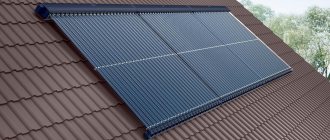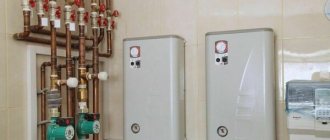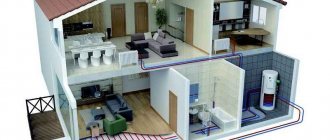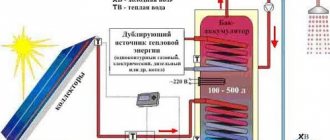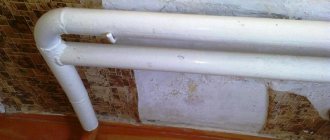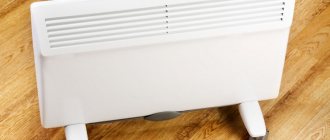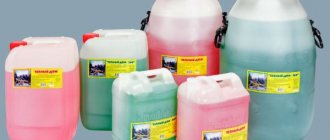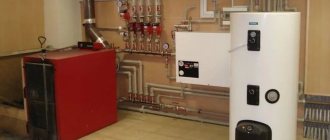Currently, new heating systems are constantly being developed. Modernization of the boiler, improving the parameters of radiators and pipes. However, along with new methods of maintaining a comfortable temperature in a living room, alternative methods are being developed. One of them is water heaters for heating a house: instantaneous, electrical. At first glance, they are intended only to provide hot water supply. But is it? To understand this issue, it is necessary to analyze the technical and operational qualities of these schemes.
Operating principle of a water heater for heating
Operating principle of a heating water heater
Typically, a boiler is used only for hot water supply. Structurally, it is a container inside which heating elements are located. When filled, they heat the liquid to the required level. Then, through the outlet pipe, it flows into plumbing fixtures - faucets in the kitchen and bathroom. But in addition to this, you can make an additional circuit for heating the air in the rooms.
Before using the water heater for heating, the following conditions must be met:
- Ensure fluid circulation in the pipes. If you constantly fill the container with running water, the heating rate of the coolant will be minimal. Make a closed circuit with circulation;
- Installation of the necessary heating elements - expansion tank, pump and shut-off valves;
- Provide for the possibility of replenishing coolant from the water supply system.
But how can a water heater be used for heating if it is not structurally designed for this? The specificity of the design and practical implementation of this task lies in the simultaneous use of the same water for hot water heating of the room. Therefore, first of all, it is necessary to install a pump of a certain power, which would ensure uniform heating by the water heater through the constant movement of liquid in the pipes. Then you should make a filtration system. The water must be purified before entering the circuit, since flow water is characterized by a large number of impurities that negatively affect the condition of pipes and heating devices.
Before purchasing an electric water heater, you need to find out whether it is suitable for heating. First of all, this concerns the availability of convenient controls with the ability to quickly regulate the temperature level in the tank.
Is it worth installing water heaters from the heating system if there are electric boilers specially designed for this? Let's look at the characteristics of both systems.
Is it possible to use a hot water boiler in a heating system?
In order to fully understand what kind of device this is, you need to understand all the nuances.
What is the device
Visually, the heating boiler looks like a container of quite large volume. A heat source is located inside or below it.
Design and technical characteristics
On the outer body of the device there is a pressure sensor and an electronic-mechanical system for controlling the boiler. Next, there is a layer of thermal insulation that separates the housing wall and the storage tank, and allows you to retain heat.
Photo 1. Indirect heating boiler model 702.1, capacity - 712 l, Italy.
It is advisable to choose the volume of the storage tank in which water will accumulate and warm up in the range of 200-300 liters. Lower values of tank capacity should not be considered, since this will not be enough to heat even a small area.
Water is heated using a tubular electric heater with a power of at least 8-12 kW.
Attention! It is important to take this indicator into account, since if it is lower, the equipment will not cope with heating, and there will be a need for round-the-clock operation of the device
What is it for?
After the storage tank is filled, the heating elements located inside it begin to heat the water to the set temperature. As the required level in degrees is reached, the liquid begins to flow through the pipes into the pipes of the main heating system.
Although the principle of operation of a heating boiler is quite simple, it is important to remember about the features of the preparatory process:
- create a closed circulation circuit;
- foresee the possibility of adding liquid to the coolant from water supply systems;
- install a pump that regulates the stable movement of water through the pipes, shut-off valves, and an expansion tank;
- establish a water filtration structure, the liquid should circulate along the circuit in a purified form, without impurities.
The heating elements built into the boiler control fluctuations in the temperature of the device. As soon as the user-defined value in degrees is reached, the system automatically turns off. If the water cools down, then the reverse process occurs: it starts heating again.
Water heater or electric boiler?
Water heater connection diagram
The idea of using instantaneous water heaters for heating arose when the first electric boilers appeared on the market. But most often, electric boilers are installed, which are designed specifically for heating. The relevance of installing instantaneous water heaters from a heating system can be determined after a comparative analysis of these devices with boilers.
An important indicator is the efficiency of the system - the ratio of the thermal energy received to the energy expended. In this regard, electric boilers are much more efficient - their figure reaches 90%. At the same time, most instantaneous electric water heaters for heating have an efficiency of no more than 70%. This is due to the specifics of the designs and the method of increasing the temperature of the coolant. Next, you should take into account certain performance qualities.
The use of an instantaneous water heater is only possible for closed systems with forced circulation. This is explained by the specific operation of the device.
Peculiarities
There is no need for very complex calculations or the use of precise instruments and measurements. Every self-respecting paint manufacturer, for example, Dulux, presents on its website a special calculator that allows you to calculate the actual consumption of paint and varnish material almost accurately. In addition, the consumption rate of paint and varnish material must be written on cans and other containers (how much surface can be painted with 1 kg or 1 liter of paint)
It is important to note that the marking shows the consumption of dye applied to a hard and perfectly smooth surface, which was treated with two layers of paint after thorough priming
Method of heating water with a water heater
Modern electric water heaters for heating operate on the same principle as boilers. A large sealed container is filled with water, which is heated using electric heating elements. In this case, heat loss occurs through the housing.
In boilers, the coolant increases the temperature when passing through a heat exchanger with a built-in heating element. Since the volume of this chamber is relatively small, heating occurs quickly. At the same time, heat losses are minimal. It should also be noted that in most cases the design already includes a circulation pump, an expansion tank and a convenient control system. Apart from the latter, electric water heaters for heating of the VEO type do not have these elements.
Furnishing a country house with hot water
If the house has just been built and is not yet equipped with a heating system, purchasing a separate water heater is not necessary. You can purchase a double-circuit boiler that connects to both the heating system and the water supply. It works according to the following scheme: when there is no hot water flow, the coolant circulates along the usual route:
- through the main heat exchanger of the heater and the heating system;
- when the user opens the tap, the valves in the boiler switch, so that the coolant is directed to an additional hot water heat exchanger (this is the second circuit).
In summer, a 2-circuit boiler provides hot water flawlessly, but in winter an important drawback appears: while the hot water tap is open, no heat enters the heating system. There are models that periodically add heat to the heating circuit, but then the water from the tap flows either a little hotter or cooler, which is very inconvenient.
Connecting an electric water heater
However, 2-circuit heaters are quite in demand today due to two important advantages:
- one combined device costs less than two separate ones;
- and at the same time takes up a minimum of space.
A double-circuit boiler heats water in flow mode, and if it has low power, the performance will probably seem insufficient. For example, in winter, in order to heat water to a temperature of +40 C in the amount of 5 - 6 l/min (about 0.1 l/sec), and this is exactly the flow rate and temperature needed for taking a shower, you will need power
Q = 4200 * 0.1 *(40 – 7) = 13860 W = 13.86 kW,
Where 4200 J/kg* C is the heat capacity of water, (40 – 7) is the temperature difference. In order to be able to use hot water in at least one more place, you will need a boiler 1.5 times more powerful. It is not practical to buy one for a small house, so instead of a 2-circuit unit it is better to purchase a heater with the ability to connect an indirect heating boiler.
Electric flower
The boiler has a decent volume and, accordingly, takes up a lot of space, but it can fully supply several consumers with hot water, albeit for a limited time (depending on its volume). After the supply of heated water is used up, you will have to wait some time until a new portion warms up.
Indirect heating boilers in winter have the same disadvantages as 2-circuit boilers. Those who are not ready to put up with them buy separate water heaters.
Heating inertia
The rate of increase in water temperature in pipes for electric boilers is quite high. The average heating time from 25 degrees to 60 degrees is 15-20 minutes, depending on the volume of the system. In this regard, heating using a water heater is significantly inferior to traditional heating. In order for the volume of water in a boiler with a capacity of 150 liters to reach the desired temperature, you need to wait about an hour. The main criteria influencing this indicator are the power of heating elements, the volume of the tank and the entire system as a whole.
However, when the electric boiler stops working, the water in the pipes quickly cools down. At the same time, in a water heater system, a large volume of hot liquid is in the tank and will require several circulation cycles for it to cool. Those. In the event of an unexpected power outage, the coolant in the boiler system will remain hot for some time.
Summarizing these factors, we can determine the main conditions for using an electric water heater for heating:
- The area of the heated room should be relatively small. This is due to the ratio of 1 kW of thermal energy per 10 sq.m.;
- Good quality running water to preserve all heating elements;
- To fill the tank, it is necessary to create the same pressure as in the water supply - 4 atm. This applies only to those cases when a regular boiler is installed that is not intended for heating from a water heater. In specialized models, the minimum pressure value is much lower - from 1.5 atm.
You can use an electric water heater to heat a house with a small area of up to 80 square meters. First of all, this applies to country houses.
The second way to use an instantaneous water heater for heating is to install a heated floor system. But even in this case, you must carefully read the diagram for connecting the device to the pipeline.
Rating of famous manufacturers
The main criteria by which products from well-known manufacturers are evaluated are quality, warranty period, standard functions, availability of additional options, variety of models.
The price of products can be ignored, since each manufacturer has lines of low, medium and high price categories.
Place #1 - Stiebel Eltron
The German company Stiebel Eltron produces impeccable equipment with a 3-year warranty. Known for producing powerful pressure water heaters with a set of additional functions. Easy installation and ease of operation, many convenient modes, temperature and pressure adjustment - outstanding qualities plus German reliability.
Model Stiebel Eltron DHB-E 13 SLi for wall mounting. Power – 13 kW, degree of protection IP 25, electronic control, emergency shutdown function
Place #2 - AEG
German manufacturer AEG, which has proven itself to be of excellent quality products. The devices last a long time and rarely end up in service centers for repairs.
In Russia, a line of single-phase devices from the “mini” series, compact and economical, has become popular.
Instantaneous water heater AEG MTD 570 with a laconic design. Power 5.7 kW; productivity – 2.9 l/min; temperature is adjusted using hydraulic control
Place #3 – Electrolux
The Swedish company Electrolux, known for its variety of models in the mid-price segment.
Compact but quite powerful devices are cheaper than their German counterparts due to the use of less reliable materials in the design. Most of the products are made in China.
Flow-through model Electrolux NPX6 Aquatronic with a power of 5.7 kW with electronic-mechanical control. Equipped with an automatic on/off function, maximum heating temperature - +50 °C
Location #4 – Atmor
Israeli brand Atmor, which produces budget devices for home and garden. Compact devices with mechanical control have several operating modes, well-functioning automation and overheating protection.
Atmor Basic shower model. It has three operating modes - with a heating power of 2/3/5 kW, there is temperature control (maximum - +50 °C), indication, a mounting kit and a shower head with a flexible hose are included.
Place #5 – Timberk
Swedish company Timberk, which produces several series of inexpensive instantaneous water heaters. The Primalux and Watermaster lines are popular. The devices are not demanding on water pressure, have compact sizes and a modern design.
Model Timberk Primalux WHEL-7 with a power of 6.5 kW, designed for showers. Productivity – 4.5 l/min; water protection class – IPX4; has three power levels and a fine filter
The listed models are popular in Russia and are available in many online stores. Prices may vary depending on the exchange rate and the marketing concept of the selling company.
Indirect heating boiler
Indirect heating boiler diagram
An acceptable alternative to the above-described method of heating rooms using a boiler are tanks for indirect heating of the coolant. According to the principle of operation, they are similar to the classic ones, but with one exception - there is a serpentine tube inside that is connected to the heating system.
But how can you use such a water heater for heating? Firstly, it should be remembered that it is only an additional source of heating the coolant. The main one is a boiler of any type. For efficient operation of an indirect heating boiler, it is recommended to install it before the return pipe enters the boiler. The heat from the water for hot water supply will be transferred to the coolant in the coil. In this way, the temperature regime of the system operation can be optimized.
They differ from electric water heaters for heating of the VEO type in their low efficiency as the main source of heat generation. But this way you can reduce current energy costs. When choosing an indirect heating boiler, it is recommended to pay attention to such parameters.
- Capacity volume. The area of contact of hot water with the coil depends on it. The larger it is, the more the coolant will heat up. The optimal volume should be 150 liters or more;
- Power of heating elements. Directly affects the rate of water heating. On average, for every 50 liters of volume a power of 2 kW is required;
- Thermal insulation of the body. To minimize heat loss, it is better to choose models with a double wall, inside of which there is insulation.
However, when organizing heating using a water heater of this type, the high cost should be taken into account.
For example, the popular Vaillant uniSTOR VIH R model with a volume of 200 liters will cost almost 20 thousand rubles. But this will be a better option than using a conventional water heater for heating.
Types of double-circuit boilers
There are a considerable number of options for boilers with two circuits. We have divided them into segments and will describe each in detail.
By heating method
- Flow-through. Such models are very popular. They are very powerful and allow hot water to flow into the faucet quickly. In such boilers, either two separate heat exchangers are used (one is used to heat the coolant, and the other is used to transfer heat from the heated coolant of the heating system to the hot water supply circuit), or one bithermic (one heat exchanger heats the coolant of the heating system and hot water).
- With built-in tank. Less common. With this design, the water is first heated in a separate tank and only then enters the mixer. Often, such boiler models are purchased quite rarely. Many people prefer to install a separate boiler and indirect heating tank. But such boiler options are quite possible. As an example, you can look at the Baxi Luna 3 Combi boiler.
By installation method
- Wall-mounted. They are extremely convenient, as they can be installed in any room, be it a corridor or a kitchen. At a fairly low price, these models have good performance. On average, they can provide heat to rooms up to 350 square meters in size. Such models are readily installed both in private houses and in apartments.
- Floor-standing. These boilers are more expensive, but they have high power and are capable of heating a huge cottage with several floors. They take up a lot of space, require a separate room and special care. Often, high-power boilers are all single-circuit, which initially means using a separate tank that will be heated by the boiler.
By method of removing liquid
- With open camera. The chamber receives oxygen from the living space. This is not always possible. The disadvantage of this solution is often the lower efficiency of the boiler. Especially if the chimney is mounted “from the bulldozer”.
- With a closed camera. Air from outside is used. They have high power and excellent tightness. They do not require a full chimney. They are usually equipped with a meter-long coaxial pipe, which is sufficient for normal operation of the boiler.
Instantaneous water heater
Instantaneous water heater for heating
An interesting solution for small areas are instantaneous electric water heaters for heating. Unlike boilers, they are capable of heating a small volume of water. The average productivity of a relatively powerful 2 kW model will be 12 lit/min at a coolant temperature of 60 degrees.
Such structures are most often installed in dachas with non-permanent residence. Since a water heater can be used for heating, it is often used for its intended purpose - providing hot water. In this case, the piping system for heating the coolant and hot water is common. The advantages of installing an instantaneous water heater as a heating device are:
- Small sizes. It can be placed almost anywhere in the kitchen or bathroom;
- Minimum inertia indicator - the time for raising the water temperature in the pipes is short;
- Convenient adjustment of temperature conditions, as well as a mandatory system for turning off heating elements in the absence of water in the pipes;
- A large selection of models that differ in both power and cost.
The main disadvantage of instantaneous water heaters for heating systems is the high energy consumption. Its constant use is impractical; as an exception, it is installed as an emergency way to maintain the water temperature in the pipes.
Making your own water heater for heating is not recommended. This is due to ensuring the safety of people living in the house.
How to choose the best appliance for your home?
The answer to the question of why a boiler is needed in a heating system has already been found. The next point for owners who have decided that this device is necessary will be to become familiar with the criteria for its selection.
What do they pay attention to?
Before purchasing, you need to check the power of the heating system. An incorrectly selected device will definitely cause problems. If the unit is too large, the coolant in the heating circuit will not be able to cope with heating the water. There are two options: either very slow heating of the liquid, or an inevitable and noticeable drop in temperature in the premises of the house.
The type of boiler also matters, so future owners will have to choose between a wall-mounted and a floor-standing unit. In this case, they act in a logical way - choose a device similar to a heating boiler. If it is wall-mounted, then it is better to buy the same model of water heater, or vice versa, for a floor-standing device - the same equipment. There is one more point: experts recommend purchasing a tandem made by one manufacturer. In this case, there will be no problems with the installation or operation of the units.
If the house has a gas supply system, then it is logical to purchase a gas unit: these models are economical, so costs will be minimal. It often happens that there is no way to connect to the gas main, and the owners do not consider the use of gas tanks or cylinders an attractive option. In this case, the only solution is to purchase an electric boiler: up to 8 kW from a 220 V network and up to 30 kW for 380 V.
Capacity is the main criterion
To find the optimal volume, you can use one simple method. You need to find out the average statistical indicators of water consumption, select the closest options (or maximum), sum them up, and then multiply them by the number of people permanently living in the house. It is recommended to round up the result obtained.
Now we need to give these “very average” fluid consumption figures:
- taking a bath - from 160 to 180 l;
- taking a shower - from 60 to 85 l;
- washing dishes - from 20 to 25 l;
- washing - from 6 to 16 liters.
As already noted, the time required for high-quality heating of water depends on the volume of the boiler tank. Therefore, we need to give two examples: the liquid in a 200-liter water heater will heat up for 6 hours. It will take approximately 40 minutes for the coolant to prepare water in a tank with a capacity of 20 liters.
There are several other points on which the service life and ease of operation and maintenance of devices depend.
Coil material
It's better to find out in advance. As a rule, inexpensive water heaters are equipped with steel elements that are welded to the tank. Models in a higher price category use heat exchangers made of brass. They are made removable, which allows you to periodically disassemble the device and clean the coil, removing scale.
Tank material
The inner surface of the tank of budget models is protected by coatings - layers of enamel or glass ceramics. This is not to say that this option is reliable. Frequent temperature changes will have a detrimental effect on both types of materials. Cracks will inevitably appear on the surface, which means that sooner or later the owners will be faced with metal corrosion. A stainless steel tank, on the contrary, is an option without any disadvantages, so its higher price is fully justified.
Insulation quality
The type of thermal insulation material is the last point on which you need to dwell when getting acquainted with the model of water heater you like. Some boilers use the simplest option - foam rubber. This heat insulator is impractical and short-lived, so it is better not to consider such models at all. The ideal choice for a water heater would be polyurethane. This insulation is a guarantee that there will be virtually no heat loss, which means that spending on “extra” electricity is eliminated.
Manufacturers
It will not be a revelation to anyone that it is always better to purchase equipment from well-known manufacturers. If we consider only water heating equipment, then it is better to give preference to companies that have long earned a reputation. These include Ariston, Bosch, Electrolux, Gorenje, Thermona, Viessmann, Zanussi, etc.
The following video will tell and show why a boiler is needed in a heating system:
Installation and selection of coolant for a water heater
Installed water heater in the boiler room
Before turning the water heater into heating, it is necessary to calculate the optimal power. In this case, you cannot be guided by the rated power of the installation. The main indicator is the time it takes to heat the water to the desired temperature. In some models it is limited to 20-30 minutes, but for most it is more than an hour.
When using a conventional electric water heater to heat your home, we recommend using the following tips.
- Installation of the unit should be carried out in a warm and dry room. In this way, heat losses can be minimized;
- The electrical wiring must be designed for the maximum load of the water heater from the home heating system;
- It is recommended to use simple distilled water as a coolant. Compared to antifreeze, it has better heat capacity;
- It is best to purchase models with a closed heating element. This will prevent scale from forming on the heating elements.
According to most experts, the optimal choice is electric water heaters for heating of the VEO type. It is important to choose the right model of a certain power. In this case, it is necessary to take into account the parameters of the main heating boiler. Together they should form an optimal air heating system in the house.
The video shows an example of self-installation of a conventional boiler as the main heating device.
How to choose a boiler for your home or apartment
Before buying a water heater, you should consider all the criteria that have already been mentioned. Now it’s worth summing up the results and before choosing a boiler for your home, we will briefly list the characteristics by which to choose a device for heating water.
Manufacturers offer water heaters of various sizes
So, first of all, we determine the volume of the tank. Manufacturers offer boilers from 5 to 500 liters. However, when a person lives alone in an apartment, then why do you need a large-volume water heater if 50 liters of water is enough for your needs. A family of 3 people will need a boiler with a tank capacity of up to 120 liters, but for a house or apartment with 4 or more residents, you need a unit designed for 150-200 liters.
It is also important to know the required power of the heating element, on which the rate of heating a certain volume of liquid to a given temperature directly depends. The optimal power of heating elements is 2 kW
Which boiler is better to choose - flow-through or storage?
An important role is played by the type of storage system, depending on the family’s needs for hot water - storage, flow-through or bulk. When deciding which company is better to choose an electric boiler, price is of great importance. The fact is that if a family needs a small-volume water heater and, moreover, for installation in a country house, then there is no need to purchase an expensive device when you can get by with a cheaper analogue.
Manufacturers of boilers and their product range
To make it easier to buy an electric boiler for heating water, you should familiarize yourself with the most popular manufacturers of water heating equipment and their model lines.
Manufacturer / Description Ariston model range Ideal combination of price and quality. Prices for the brand’s heating devices start from $100, which makes Ariston boilers affordable for any consumer.
The SG series is represented by budget models with a volume from 10 to 80 l The ABS PRO ECO series - boilers with tanks with increased protection against bacteria The ABS PRO ECO SLIM series presents compact models designed for small spaces ABS SLV - water heaters in this series have a special Silver Protection coating and original Electrolux design The brand's water heating equipment meets all modern requirements, is functional and has a relatively low level of energy consumption.
EWH SL EWH QUANTUM SLIM EWH MAGNUM SLIM EWH 15S AEGThe company produces water heating equipment and guarantees the high quality of all components and assembly
They also pay great attention to the safety and environmental friendliness of their products.
AEGEWH Universal EL AEGEWH 10 mini AEGDEM Basis AEG EWH Comfort EL TermexThe company offers its customers high-quality water heaters at an affordable price. Features of Termex boilers include the ability to adjust power from 1.3 to 3 kW.
FLAT TOUCH FLATP LUS ROUND PLUS ELITE GorenjeThe Slovenian company offers boilers with plastic or steel tanks and an enameled inner surface.
GT – these are models with a volume of 10-15 liters TG – the main series of boilers GB – devices with a “dry” heating element OGB – models with a long warranty period
When is it advisable to choose electricity for heating?
Electric heaters for heating cannot be considered the most budget option, at least in our country, because the costs of equipment and its operation are quite high.
They are usually considered as an alternative option, connected to the system in case of interruptions in the gas supply or when there is no possibility of laying appropriate communications at all. Their price depends on the area they can heat.
Electric water heaters for heating EVPM-36
However, this method of home heating has a number of undeniable advantages:
- widespread availability. since when arranging a suburban area, electricity is carried out almost first;
- quick and easy installation of equipment. which you can do yourself;
- compactness;
- ease of control;
- no combustion products.
Classification of electric heating devices
Today, electric heating equipment can be grouped as follows:
- Mobile - heating convectors and oil radiators.
- Stationary - electric boilers, boilers, fireplaces, IR heaters and air conditioners.
- Air - space heating is carried out by heating the air, for which various equipment is used, including radiators, electric fireplaces, and convectors.
- Liquid – the coolant is water, antifreeze or oil. Electric boilers and boilers are used for this.
- Solid-state (emitters) - heat is transferred to any solid surface, and it then heats the air in the room. Typical representatives are infrared heaters, as well as radiant ones.
- Tubular - used in all types of heating electrical appliances. They have a wide range of characteristics, including power and performance. Made from titanium or steel.
- Tubular with fins - used only for heating gas coolants, as well as air. Equipment includes thermal curtains and convectors. They are usually made from stainless or structural steel.
- Block or block electric heaters - used if it is necessary to increase the power of the device. The coolant is a liquid or any bulk material. The most common type of household heaters with a coolant in the form of a liquid is with a thermostat. The equipment is made of steel, chromium-nickel alloy or copper.
Electric water heater for heating a private house
Advantages of electric heating
Many people choose electrical appliances as a heat source even if there is a gas main, since such heating has certain positive aspects:
- easy to install;
- does not make noise;
- easy to use;
- does not require the installation of chimneys to remove combustion products.
Connecting electricity is much cheaper and easier. Today, the cost of gasifying a house is approximately 300 thousand rubles, which in conditions of unfinished construction can be a determining factor. And many gardening associations, where residents are now allowed to legally reside, are not getting gasification even in the distant future.
When installing electric heating, you need to be prepared for the fact that utility bills will be rather high, since electricity is a derivative of other types of fuel (oil, gas, coal or nuclear materials). Some inconveniences can be caused by voltage fluctuations in the network or frequent power outages. Therefore, when connecting electric heaters or boilers, it is recommended to immediately install a stabilizer and generator.
Some boilers operate on three-phase 380V, which requires a permit. Maximum measures must be taken to prevent electric shock, and high-quality working grounding must be installed.
Heater selection
This device has a number of significant disadvantages:
- chimney required;
- you need to obtain permission and call specialists for installation (self-connection is prohibited by law);
- There is a danger of poisoning from natural gas or its combustion products (carbon monoxide).
But all these difficulties do not deter buyers, since gas is the most affordable fuel (subject to a centralized gas supply).
Of the gas water heaters, the most commonly purchased are instantaneous ones, which are commonly called geysers. As shown above, heating water using the flow method requires significant power, but household gas supply networks, as a rule, can provide it. Columns with a power of 24 - 30 kW are not uncommon, and there are also units with a power of 40 kW. Such an installation is capable of “pulling” the hot water supply of a large cottage.
Wall mounted water heater
Columns can be very different, but first of all you should pay attention to the ignition system. There are two options:
- The column has a pilot burner (wick).
- The gas in the main burner ignites from a spark, which is generated by batteries, a household electrical network or a piezoelectric element driven by a flow of water (a turbine is installed in the water pipe).
It is better to give preference to the second option. At first glance, it may seem that the small wick (first option) consumes gas in minute quantities, but in fact, because of it, fuel consumption increases by a third.
Columns in which a spark is generated by a flow of water are demanding on the pressure in the water supply. If a country house is powered by a water tower, such a column most likely will not be able to work.
And only in cases where the gas supply system is not able to provide sufficient power, a gas boiler is installed.
Storage water heater in the bathroom
Solid or liquid fuel water heaters are somewhat more expensive to operate. But they are extremely inconvenient in that the fuel needs to be stored somewhere, and if we are talking about firewood, then it must also be placed in the firebox. Therefore, such devices are installed only as a last resort.
If there is no gas, but there is electricity, then instead of a wood-burning one it is better to purchase an electric water heater. It has more than enough advantages:
- no chimney required;
- does not make noise;
- easy to control (power varies widely);
- the operation of the installation is fully automated;
- there is no need to bring and store fuel;
- there is no danger of fire and poisoning of household members.
All these “advantages” encourage people to prefer electricity to wood and coal, even though it is quite expensive.
Floor standing boiler
If gas-fired water heaters are most often installed, then with electric water heaters it’s the other way around - boilers are mostly purchased. The fact is that household networks are not designed for significant power. Even to connect 15 kW, it is highly likely that you will need to replace not only the cable, but also the transformer at the substation, which will cost the customer a lot of money.
However, electric flow devices are still produced. It is impossible to get a lot of hot water from them, so they are used mainly in country houses or in city apartments - to somehow get by during short-term outages of the centralized hot water system.
With an electric flower, it makes sense to purchase a special shower head and spout that can produce high-quality “rain” and stream at low flow rates.
There are two types of electric “flow ducts”:
- non-pressure;
- pressure
Non-pressure ones are connected to the water supply outlet after the valve (tap) and represent a water collection point. Pressure ones can cut into the water supply system, and thus supply hot water to several water collection points.
Installation of equipment
Installation of water heating devices is carried out in the following order:
- Preparation of the place, at least 1 m². Foundation installation is required for large volume tanks (more than 200 liters).
- The tank is installed strictly perpendicular. If there are legs, they are rigidly fixed to the floor with fasteners.
- To circulate the coolant, a pump is mounted to the boiler.
- When connecting to a heating system, the inlet pipe is connected to the heating outlet through a tee.
- The central water supply is connected to the equipment through a tee with a check valve.
- Power supply is supplied via a separate line, through an automatic circuit breaker with an RCD.
- The correct connection and its tightness are checked with the heating elements turned off.
Heating a house with a boiler
Good heating is one of the most important factors that distinguishes a comfortable home from a home in which a person cannot feel comfortable. Today there are many traditional heating systems that can be used to heat a country house of any size. One of the most popular systems is gas heating. Natural gas is considered one of the cheapest coolants in our country. But, unfortunately, gas pipelines are not stretched everywhere. Therefore, heating systems that use a different coolant - for example, hot water - are very popular. And the basis of such a system can be an ordinary boiler.
Distinctive features of the boiler for the heating system
It must be said that using a boiler for heating is quite possible; moreover, today manufacturers produce boilers specifically designed for heating water in the system. These boilers have two significant differences from those intended exclusively for heating water for domestic purposes - for example, for bathing or washing dishes.
Firstly, in such boilers the inlet for cold water is located at the bottom, and the outlet for hot water is at the top. This arrangement of the holes is explained by the fact that when the water heats up, it rises, and therefore the hottest water is located at the top of the boiler, and it is the use of such water that will make the heating system as efficient as possible.
Secondly, the boiler, designed for heating water in the heating system, has a large hole diameter. If you look at factory-made boilers, you will see that both the cold water inlet and the hot water outlet are never smaller than 2 inches in diameter (about 4.8 cm).
If the boiler has both of these distinctive features, then it can safely be used as the basis for a heating system - that is exactly what it is intended for. And the movement of water through the heating system itself is carried out due to the fact that cold and hot water have different densities, and cold water, entering the boiler, displaces the hot water first to the top, and then through the hole into the pipes of the system.
Using a boiler for a water supply system to heat a house
One of the frequently asked questions regarding the use of a boiler in a heating system is the following: can a boiler, which is designed to simply heat water for domestic needs, be used in a heating system. There is no definite answer to this question - it all depends on how extensive the heating system itself is and what additional equipment is used.
A boiler for a water supply system is different in that it has both holes (both the cold water inlet and the hot water outlet) located at the bottom, and both of these holes have a small diameter (most often it is 0.5 inches or approximately 1.2 cm ).
This arrangement of holes eliminates the possibility of water moving through the heating system on its own, since here cold water will not constantly “drive” hot water out of the tank and force it to move through the pipes. But, in general, such a boiler can be used in a heating system if it is supplemented with a circulation pump, which will be “responsible” for the movement of water through the heating system. The effectiveness of such a system depends on several factors:
- depends on how powerful the boiler itself is. Suitable power is usually determined at the rate of 1 kW per 10 square meters of heated area.
- depending on how powerful the circulation pump is
- depends on how extensive the heating system of the house is. It is best if it does not have many branches.
As for the type of boiler, you can use both instantaneous and storage water heaters.
So, heating a house with a boiler is not a fantasy at all, but a completely viable option for installing a heating system. The main thing when creating such a system is to accurately calculate the required boiler power, based on the size of the house. In some cases (for example, if the house area is large enough), the efficiency of the system can be increased by expanding the water inlet and outlet, as well as by upgrading the boiler itself to increase its power.
